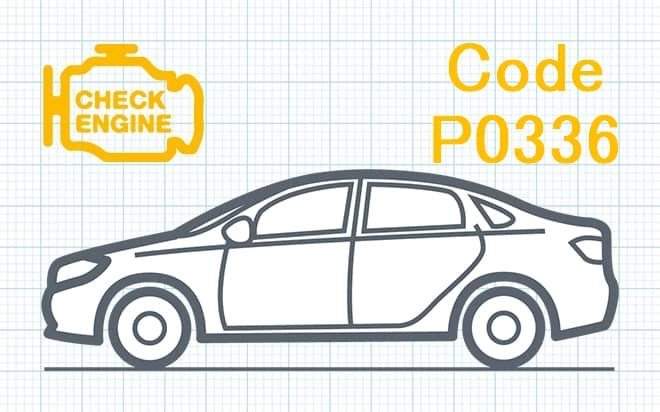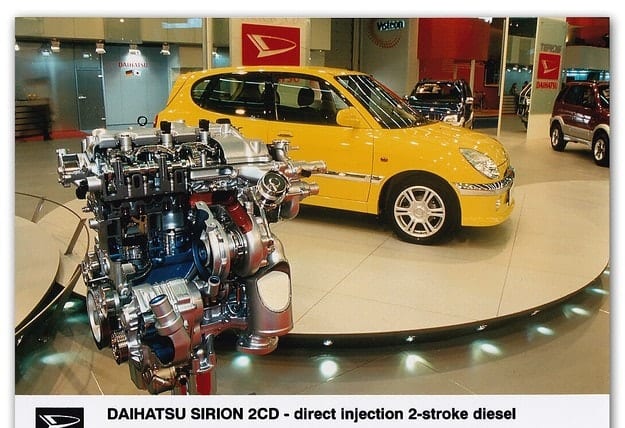
P0336 Crankshaft position sensor out of range / performance
Content
- DTC P0336 - OBD-II Data Sheet
- What does trouble code P0336 mean?
- Symptoms
- Causes of the P0336 code
- Possible solutions
- How does a mechanic diagnose a P0336 code?
- Common Mistakes When Diagnosing Code P0336
- How serious is the P0336 code?
- What repairs can fix code P0336?
- Additional comments to consider regarding code P0336
- Need more help with your p0336 code?
DTC P0336 - OBD-II Data Sheet
Crankshaft Position Sensor Circuit Range / Performance
What does trouble code P0336 mean?
This Diagnostic Trouble Code (DTC) is a generic transmission code. It is considered universal as it applies to all makes and models of vehicles (1996 and newer), although the specific repair steps may differ slightly depending on the model.
The crankshaft position (CKP) sensor is usually two-wire: signal and ground. The CKP sensor consists (usually) of a permanent magnet sensor that is installed in front of a reaction (gear) wheel mounted on the crankshaft.
When the jet wheel passes in front of the crank sensor, an A / C signal is generated that changes with the engine speed. The PCM (Powertrain Control Module) uses this A / C signal to interpret the engine speed. Some crank sensors are Hall sensors instead of constant magnetic field sensors. These are three-wire sensors that provide voltage, ground, and signal. They also have a jet wheel with blades and "windows" that change the voltage signal to the PCM, providing a rpm signal. I will focus on the former as they are simpler in design and more common.
The crankshaft reactor has a certain number of teeth and the PCM can detect the position of the crankshaft using only the signature of that sensor. The PCM uses this sensor to detect cylinder misfire by measuring the positions of the reactor teeth in the CKP sensor signal. In combination with a camshaft position (CMP) sensor, the PCM can detect the timing of ignition and fuel injection. If the PCM detects a loss of the CKP (RPM signal) sensor signal even momentarily, P0336 may be set.
Related Crankshaft Position Sensor DTCs:
- P0335 Crankshaft Position Sensor Circuit Malfunction
- P0337 Low crankshaft position sensor input
- P0338 Crankshaft Position Sensor Circuit High Input
- P0339 Crankshaft Position Sensor Intermittent Circuit
Symptoms
Symptoms of a P0336 trouble code may include:
- Intermittent stop and no start
- Does not start
- MIL Illumination (Malfunction Indicator)
- One or more cylinders may be misfiring
- Vehicle may shake when accelerating
- The car may start unevenly or not start at all.
- Motor may vibrate/spray
- Vehicle may stall or stall
- Loss of fuel economy
Causes of the P0336 code
Possible causes of a P0336 code include:
- Bad crank sensor
- Broken reactor ring (missing teeth, ring clogged)
- The relay ring is displaced / removed from its stationary place
- Rubbing the wire harness causing a short circuit.
- Broken wire in the CKP circuit
Possible solutions
Crankshaft sensor problems are sometimes intermittent and the vehicle may start and run for a while until a problem occurs. Try to reproduce the complaint. When the engine stalls or the engine does not start and continues to run, crank the engine while observing the RPM reading. If there is no RPM reading, check if the signal is coming out of the crank sensor. It is best to use a scope, but since most DIYers do not have access to it, you can use a code reader or tachometer to check the RPM signal.
Visually inspect the CKP wire harness for damage or cracks in the wire insulation. Repair if necessary. Make sure the wiring is routed correctly next to the high voltage spark plug wires. Check for poor connections or a broken lock on the sensor connector. Repair if necessary. Obtain the resistance characteristics of the crankshaft sensor. We shoot and check. If not, replace. If ok, check the reactor ring for damage, broken teeth, or debris stuck in the ring. Make sure the reactor ring is not misaligned. It must be stationary on the crankshaft. Repair / replace carefully if necessary. Note: Some of the reaction rings are located in the transmission hood or behind the engine front cover and are not easy to access.
If the car periodically stalls, and after stopping you do not have a rpm signal and you are convinced that the wiring to the CKP sensor is working properly, try replacing the sensor. If this does not help and you cannot access the reactor ring, seek help from a professional car maker.
How does a mechanic diagnose a P0336 code?
- Uses an OBD-II scanner to retrieve all trouble codes stored in the ECM.
- Visually checks the crankshaft position sensor for obvious damage.
- Inspects wiring for breaks, burns, or short circuits. It is also important to make sure the sensor wires are not too close to the spark plug wires.
- Inspects the connector for breaks, corrosion, or a loose connector.
- Inspects the crankshaft wiring harness insulation for any type of damage.
- Inspects brake wheel for damage (reflector wheel must not dangle on crankshaft)
- Make sure the brake wheel and top of the crankshaft position sensor have proper clearance.
- Clears trouble codes and performs a test to see if there is a return,
- Uses a scanner to view RPM readings (performed when the vehicle is started)
- If there is no rpm reading, it uses a scanner to check the crankshaft position sensor signal.
- Uses a volt/ohmmeter (PTO) to check the resistance of the crankshaft position sensor wiring and the crankshaft position sensor itself (resistance specifications are provided by the manufacturer).
- Checks the camshaft position sensor and its wiring - Because the crankshaft and camshaft work together, a faulty camshaft position sensor and/or camshaft position sensor wiring can affect the operation of the crankshaft position sensor.
- If there is a misfire in the engine, it must be diagnosed and repaired.
If all diagnostic tests fail to resolve the problem with the crankshaft position sensor, there is a rare possibility of an ECM problem.
Common Mistakes When Diagnosing Code P0336
There are a few errors that are often made when diagnosing DTC P0336, but the most common one is replacing the crankshaft position sensor without considering other possible solutions.
The crankshaft position sensor and the camshaft position sensor are closely related to each other, and for this reason the crankshaft position sensor is often replaced when the real problem is a malfunction of the camshaft position sensor.
Before replacing the crankshaft position sensor, it is also important to consider the possibility of engine misfire or wiring problems. Proper consideration of these components will save you a lot of time and help avoid misdiagnosis.
How serious is the P0336 code?
A vehicle with this DTC is unreliable as it may be difficult to start or not start at all.
In addition, if the problem with the crankshaft position sensor is not resolved for a long period of time, other engine components can be damaged. For this reason, DTC P0336 is considered serious.
What repairs can fix code P0336?
- Replacing a damaged brake wheel
- Repair or replace damaged wiring or crankshaft position sensor circuitry
- Repair or replace a damaged or corroded crankshaft position sensor connector
- Repair or replacement of the crankshaft position sensor wiring harness
- If necessary, repair misfires in the engine.
- Replacing a faulty crankshaft position sensor
- Replacing a faulty camshaft position sensor
- Replacing or reprogramming the ECM
Additional comments to consider regarding code P0336
A defective crankshaft must be replaced as soon as possible. Failure to do so for an extended period of time may result in damage to other engine components. When replacing the crankshaft position sensor, an original equipment manufacturer (OEM) part is recommended.
Be sure to carefully inspect the brake wheel for damage as it is commonly overlooked as the cause of DTC P0336. It is also important to keep in mind that engine misfires can also be the cause of this code.
Need more help with your p0336 code?
If you still need help with DTC P0336, post a question in the comments below this article.
NOTE. This information is provided for informational purposes only. It is not intended to be used as a repair recommendation and we are not responsible for any action you take on any vehicle. All information on this site is protected by copyright.
